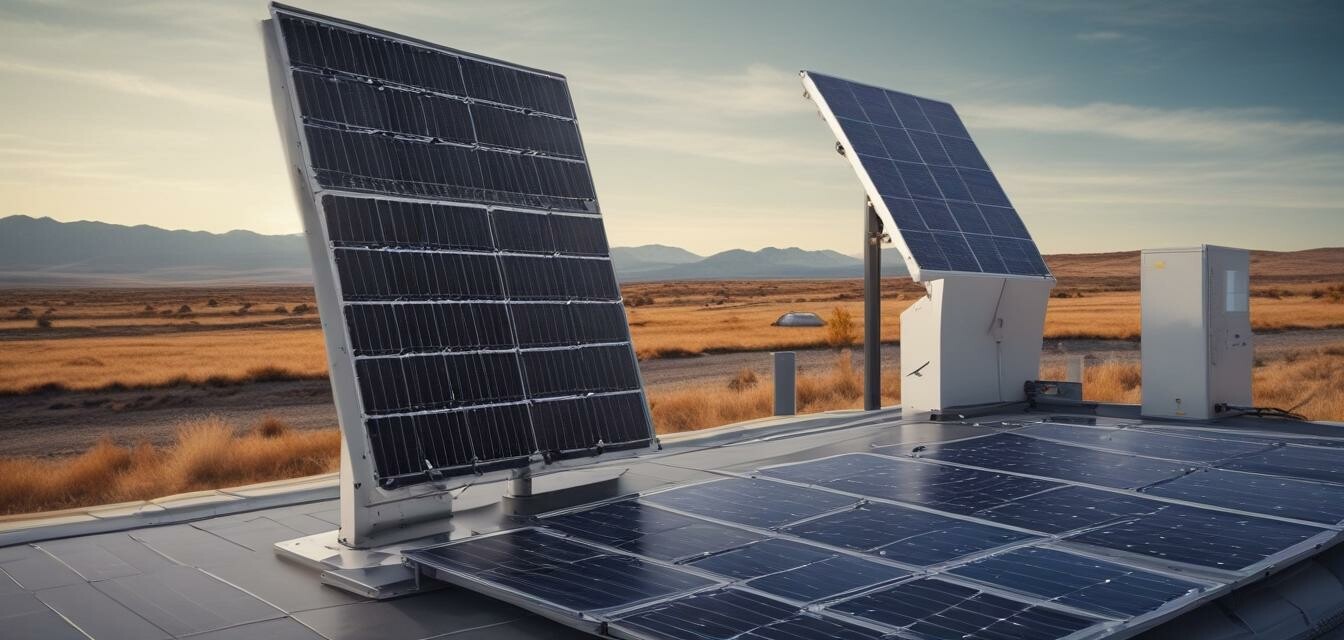
Setting Up a Remote Monitoring System for Your Solar Installation
Key Takeaways
- Remote monitoring helps track the performance of your solar system in real-time.
- Consider compatibility with your existing solar equipment.
- Monitoring systems can enhance energy efficiency and troubleshooting.
- Explore different types of remote monitoring solutions.
- Choose a user-friendly interface for easier management.
As the world shifts towards renewable energy, solar installations become increasingly popular for homeowners and businesses alike. One of the most essential components of maximizing your solar system's efficiency is to set up a remote monitoring system. In this guide, we'll explain how to establish a monitoring system that allows you to track solar energy production and storage seamlessly.
Why remote monitoring is essential
Remote monitoring provides numerous benefits that can significantly enhance the performance of your solar power system. Here are a few reasons why integrating a monitoring solution is a smart choice:
- Real-time tracking: Monitor the energy production and storage at any time, ensuring optimal performance.
- Error detection: Quickly identify any faults or inefficiencies in your system, allowing for timely repairs.
- Improved energy management: Analyze your energy consumption and optimize usage to save money.
- Better decision making: Use data-driven insights to enhance your solar installation and address any issues proactively.
Types of remote monitoring systems
There are various remote monitoring systems available on the market, each with its unique features. Here’s a quick overview:
| Monitoring Type | Features | Pros | Cons |
|---|---|---|---|
| Wi-Fi monitoring | Connects via Wi-Fi | Easy setup | Dependent on good internet connection |
| Wired monitoring | Directly connects to your solar system | Stable and secure connection | More complex installation |
| Mobile app monitoring | Smartphone access to data | Convenient and user-friendly | Limited in-depth data analysis |
| Cloud-based monitoring | Data stored in the cloud | Access from multiple devices | Requires internet access |
Steps to set up remote monitoring
Setting up a remote monitoring system can be straightforward if you follow these steps:
- Evaluate your current system: Assess your existing solar setup to identify compatibility with monitoring solutions.
- Choose the right monitoring type: Based on your needs and preferences, select the type of monitoring system that works best for you.
- Installation: Follow the manufacturer’s instructions to install the monitoring equipment correctly.
- Connect to the internet: Ensure your monitoring system is connected to the internet for real-time data transmission.
- Test the system: Check that the system is functioning correctly and can capture and transmit data as expected.
- Set up alerts: Configure notification settings for any potential issues with your solar energy production.
- Regularly review data: Make it a habit to check your data to track performance and identify areas for improvement.
Tips for optimizing your remote monitoring
Beginner's Section
- Familiarize yourself with the monitoring system's dashboard and features.
- Keep your software updated to take advantage of new features and improvements.
- Utilize data to understand seasonal changes in solar production.
- Consider using additional sensors (like temperature) for more precise data.
- Join online communities to share tips and advice with other solar panel owners.
Conclusion
Setting up a remote monitoring system for your solar installation is an essential step towards energy efficiency and independence. By understanding the types of monitoring systems available, following the setup steps, and utilizing optimization tips, you can effectively track your solar energy production and storage. This way, you can ensure your system is working at its best to support your energy needs.
Pros
- Enhances energy management and efficiency.
- Enables quick identification of issues in the system.
- Provides valuable data for decision making.
Cons
- May require initial investment for setup.
- Dependent on internet connectivity for real-time access.
Related resources
Explore our related articles for more information on solar energy solutions:


